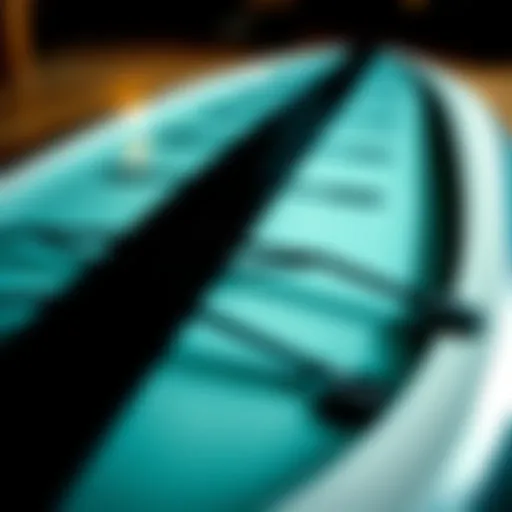Exploring Innovative Kiteboard Companies and Their Impact
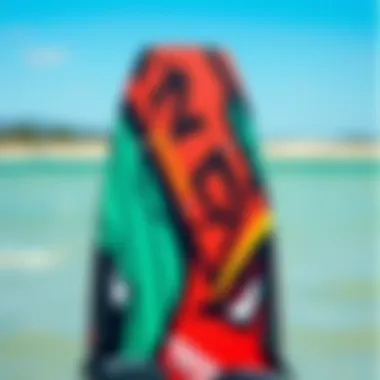
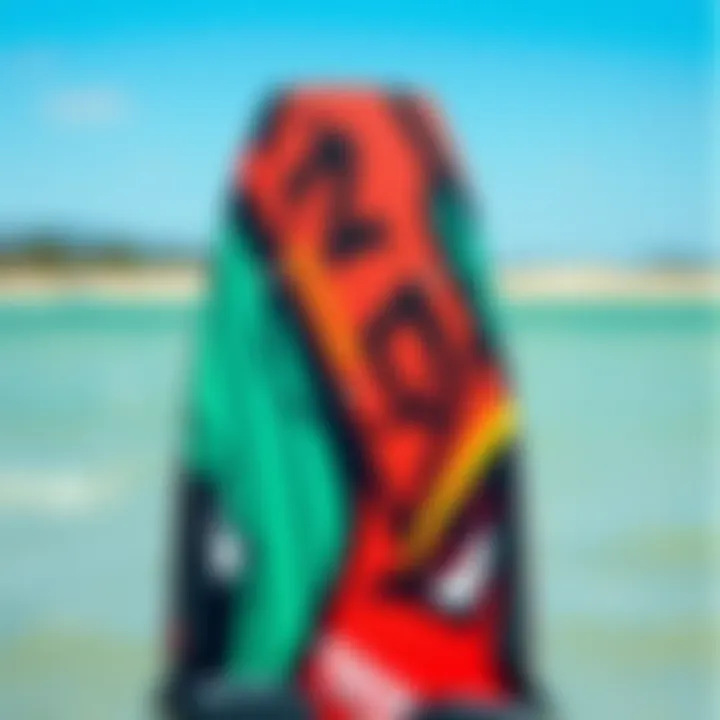
Intro
Kiteboarding, a sport that combines elements of surfing and wind power, has seen tremendous growth over the last couple of decades. With its rise in popularity, the market has burgeoned, leading to a multitude of kiteboard companies each trying to carve a niche for themselves. These companies play a pivotal role—not just in the manufacturing of kites and boards, but also in pushing the boundaries of technology and design. In this landscape, understanding what makes a company a leader in the kiteboarding space is crucial for enthusiasts and professionals alike.
Innovation is not merely a supplement; it is the backbone of kiteboarding's progression. From enhancing performance to prioritizing safety and sustainability, the contributions of these companies reach far beyond the products they sell. Each brand brings forward unique elements that cater not just to the elite riders but also to those just starting out. This article seeks to stitch together the vibrant fabric of the kiteboarding community by examining the key players, their strategies, and their impacts in a comprehensive manner. Let's dive deeper into the essential aspects affecting the gear selection before we explore skill development.
Gear Selection
Selecting the right equipment in kiteboarding can feel like navigating through a minefield, especially for newcomers. A thoughtful approach is required for both kites and boards to maximize performance and enjoyment.
Types of Kites
When it comes to kites, not all are created equal. The variety can be dizzying, but understanding the types can make a substantial difference:
- Closed-cell Kites: These are designed to float and work best in lighter winds. Great for handling tricky conditions.
- Open-cell Kites: Typically offer better power and response, making them ideal for more experienced riders.
- Foil Kites: Popular for racing, these kites are lightweight and offer unbelievable speed.
- C-Kites: Known for their outstanding freestyle performance, these kites are characterized by their minimal shape and can be quite challenging to use.
Choosing the right kite depends on various factors, including wind conditions, rider experience, and the type of riding preferred. As the saying goes, "It's not just about the kite; it's about the kite and the wind working together."
Choosing the Right Board
Boards also come in different shapes and sizes, each catering to distinct styles and levels:
- Directional Boards: Similar to surfboards, these boards are dexterous for wave riding.
- Twin-Tip Boards: Perfect for freestyle, these boards can be ridden in both directions, which eases the learning curve for beginners.
- Freeride Boards: Versatile and forgiving, these boards cater to those seeking a balance between speed and maneuverability.
When selecting a board, consider your skill level, the type of riding you hope to achieve, and the environmental conditions where you'll be kitesurfing.
"In kiteboarding, your gear is your voice; it speaks volumes about your style and your abilities."
The right gear is essential, but without proper skill development, even top-notch equipment can leave you wanting more. So, let’s transition into essential techniques and tips to enhance your kiteboarding experience.
Intro to the Kiteboarding Industry
The kiteboarding industry, with its vibrant community and dynamic innovations, stands as a crucial segment of the broader watersports arena. The significance of this field manifests not only in its growth over the years but also in the way it bridges technology, performance, and environmental consciousness. As kiteboarding continues to attract enthusiasts of all ages, understanding its evolution and market realities becomes vital.
In recent years, the skip on technological advancements has opened new doors for both recreational and competitive kiteboarders. New materials, enhanced designs, and rigorous testing have refined the sport, making it more accessible and enjoyable. The role of kiteboard companies in this ongoing transformation cannot be overstated; they are the backbone of the industry, consistently pushing the boundaries to improve user experience.
The spectrum of kiteboarding is wide-ranging; it includes not just the products manufactured but also the culture that thrives around it. Riders and instructors engage deeply with brands, often forming lasting community ties and friendships through their mutual passion for the sport. Consequently, the kiteboarding industry's impact extends beyond mere commerce; it fosters a shared sense of belonging among its members.
As we dig into The Evolution of Kiteboarding and The Current Market Landscape, keep in mind how interconnected these elements are with the experiences of riders, the innovations driven by companies, and the motivations behind brand loyalty. By exploring these facets, this article will give a clearer picture of the kiteboarding landscape today and its implications for the future.
The Evolution of Kiteboarding
Kiteboarding might seem like a modern sport, but its roots stretch deep into the past. Initially born from the ingenious blending of surfing and paragliding in the late 1970s, kiteboarding has morphed substantially since its inception. Early pioneers experimented with various configurations of kites and boards, drawing from various sports to refine the methodology behind kite propulsion.
By the late 1990s, as brands soared in popularity and awareness grew, the burgeoning sport began to establish itself more firmly. The introduction of the first commercially successful kites offered a glimpse into the sport's potential. Although early models were often cumbersome and difficult to manage, they laid the groundwork for the sleek, powerful designs of today. The shift to inflatable kites in the early 2000s significantly altered the dynamics of the sport, enhancing both safety and performance.
Throughout its evolution, innovations such as adjustable harnesses, the widespread use of lighter materials, and safety release systems have emerged. These advancements have not only improved the performance but have made the sport safer and more user-friendly.
The Current Market Landscape
Today, the kiteboarding market is as lively as a summer beach day. Various companies, both established and emerging, vie for position. This competitive atmosphere drives innovation and ensures a plethora of choices for riders. From complete beginners to seasoned professionals, every type of kiteboarder can find equipment that suits their individual style and preferences.
The global kiteboarding market is projected to grow steadily as awareness of outdoor adventure sports increases. Companies like Naish, Cabrinha, and Duotone have built formidable reputations and enjoy a loyal customer base, thanks to their commitment to quality, innovation, and performance.
However, it is not only the giants that attract attention. New players continue to enter the marketplace, bringing fresh perspectives and unique designs to the table. Many of these brands focus on sustainability, employing eco-friendly materials and responsible manufacturing processes to appeal to a growing segment of eco-conscious consumers.
In summary, the current market landscape demonstrates a healthy mix of competition and collaboration. A vast array of options empowers consumers, encouraging them to engage more deeply with the kiteboarding community. As this growing industry navigates challenges and embraces opportunities, its future looks promising for both companies and riders alike.
Major Kiteboard Companies
Understanding the major kiteboard companies is vital for anyone who’s serious about kiteboarding, whether you’re a novice hoping to catch the wind or a seasoned pro carving through waves. These companies are not just manufacturers; they shape the industry's landscape, pushing boundaries of performance, innovation, and design. The brands we’ll talk about serve as benchmarks, setting standards that others strive to meet or exceed. Each has its own unique story, contributing to a rich tapestry of legacies in this dynamic sport.
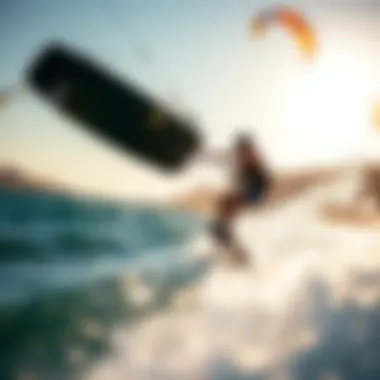
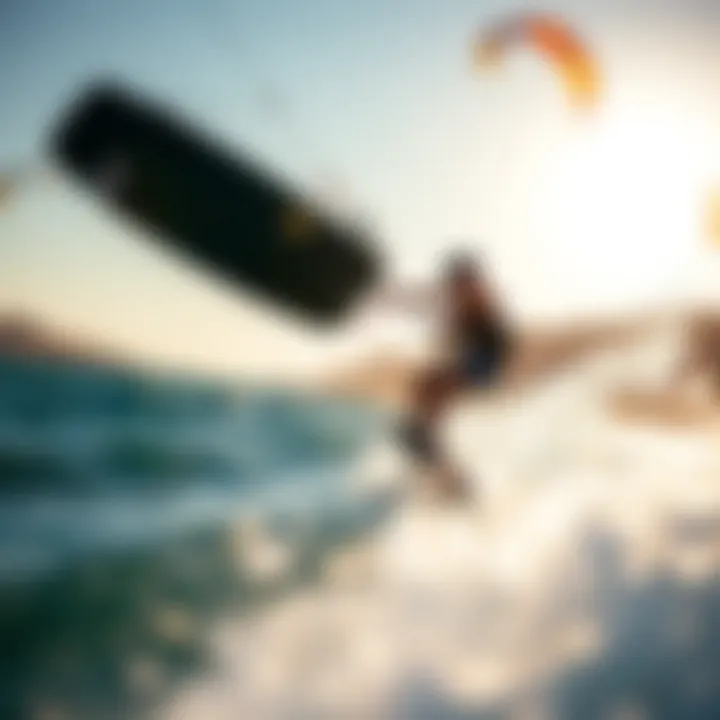
Notable Brands and Their Legacies
When considering notable brands in kiteboarding, a few names instantly come to mind, each with a legacy that intertwines with the evolution of the sport itself. Take Naish Kites, for example. Founded by legendary windsurfer Robby Naish, this brand is synonymous with quality and performance. Their kites have consistently been at the forefront of technological advances, enabling riders to push their limits. Similarly, Cabrinha has carved its niche by innovating products tailored to all skill levels, making sure that whether a rider is a beginner or an expert, they’ve got what they need.
Duotone has also emerged as a formidable name, particularly after its split from North Sails. Its attention to detail and focus on rider feedback has allowed them to craft efficient and diverse quivers that cater to varied riding styles.
- Slingshot is another key player, often recognized for their adventurous spirit and commitment to developing gear that's both durable and versatile. They pay close attention to the evolving needs of riders, and have a significant role in freestyle kiteboarding competition thanks to their reliable equipment.
These brands, alongside others like Liquid Force and F-One, showcase a lineage of commitment and care. Their historical influence provides insight into fundamental design and performance characteristics that set them apart in a crowded marketplace.
"In the world of kiteboarding, the name on your gear often speaks volumes about your commitment to the craft."
Emerging Players in the Market
With innovation at the forefront of kiteboarding, the market has seen new contenders stepping into the limelight. Companies like Ozone and Airush are gaining traction fast, often impressing experienced riders with their commitment to advancing design and technology. For instance, Ozone specializes in light and robust materials that enhance performance without the added weight—an essential feature for those who want to maximize their time on the water.
Another noteworthy mention is Nobile, which focuses heavily on both engineering and environmental sustainability. Their eco-friendly ethos is becoming more prevalent, appealing to riders who care about the planet while indulging in their passion. Brands like Vibe and Skywalker are also emerging, targeted at the savvy kiteboarding enthusiast looking for performance gear that won’t break the bank. They offer high-quality alternatives, often competing on metrics like durability and maneuverability.
In summary, the kiteboarding industry is not just about established names; it's also about new players who bring fresh ideas and perspectives. This blend of legendary brands and new innovators keeps the sport vibrant and ever-evolving, ensuring riders of all stripes can find gear that meets their specific needs. As consumers become more informed and demand options, we can expect these emerging brands to continue pushing the envelope.
Innovation in Kiteboarding Equipment
Innovation in kiteboarding equipment plays a vital role in the ongoing development of the sport, enhancing the overall experience for participants, from novices to seasoned pros. The evolution of gear impacts safety, performance, and accessibility, which are crucial factors that can determine whether someone sticks with the sport or finds it challenging and disengaging.
The introduction of advanced technology in kite design and manufacturing changes the game. With each passing year, kiteboard companies pour resources into research and development, seeking to push the envelope further. Notably, innovations lead to more efficient wind capture, increasing lift and control while reducing drag. These improvements in kite performance give riders the ability to explore a wider range of conditions.
In this context, it’s not just about speed or tricks; it’s about creating sustainable practices that respect the environment, ensuring that kiteboarding can be enjoyed for generations to come. The effect of innovative equipment extends beyond the immediate thrill of riding; it encourages riders to explore new locations, which in turn supports the local economies that thrive on tourism from sports enthusiasts.
Technological Advances in Kite Design
Kite design has significantly improved over the years, largely thanks to technological advancements that allow brands to experiment with shapes, materials, and construction methods. The incorporation of computer-aided design software streamlines the prototyping stage, allowing greater precision in shaping kites to meet specific performance needs.
Among the notable developments are:
- Leading Edge Inflatable (LEI) kites, which are favored for their stability and ease of use. These kites utilize advanced materials and a unique design that allows them to withstand powerful winds while minimizing deformation.
- Foil kites, which have a distinct advantage in light wind conditions, offer an efficient means of generating lift. Their design enables them to stay in the air longer, appealing to riders seeking longer sessions and more time on the water.
The benefits of these designs are clear. Riders experience improved responsiveness and better handling, which boost their confidence levels. Newer designs also come equipped with safety features such as automatic depower systems, making it easier for novice riders to learn without feeling overwhelmed.
Materials and Construction Techniques
The shift in materials and construction techniques has also contributed to enhanced kiteboarding gear. The use of lighter, more durable fabrics has paved the way for kites and boards that perform better under a wider variety of conditions. Nylon ripstop and polyester canvases are common, offering exceptional strength and minimal weight, creating a responsive riding experience while enhancing durability.
Some noteworthy construction techniques include:
- Double-layer seams that reinforce the kite’s structure, preventing wear and tear, especially during intense sessions.
- Thermal bonding methods to create airtight seams, which prevent leaks while maintaining the kite's shape, thus prolonging its lifespan.
Using these techniques, kite manufacturers can produce gear that not only performs well but also lasts longer, reducing the frequency of replacements and fostering a more sustainable approach.
Kiteboard Gear and Accessories
Kiteboard gear and accessories form the backbone of every kiteboarding experience. This equipment not only enhances performance but also ensures safety on the water. Riders, whether seasoned or new, should have a clear grasp of what each component does and how it contributes to an enjoyable session. By understanding the various options available, kiteboarders can make informed choices that enhance their sport and maintain safety standards.
Types of Kiteboards: An Overview
Kiteboards come in various shapes and sizes, each tailored for specific riding styles and conditions. Choosing the right board can make all the difference in performance and enjoyment. Here’s a quick rundown:
- Directional Boards: Ideal for wave riding, they function like surfboards. Riders can maneuver through water with ease.
- Twin-Tip Boards: The most common type among beginners. These boards are symmetrical, allowing riders to ride in both directions without turning the board around.
- Foil Boards: Emerging in popularity, foil boards have a hydrofoil attached beneath them, enabling riders to glide above the water. This reduces drag and allows for a smoother ride, especially in lighter winds.
Selecting the proper board involves considering factors like skill level, riding style, and typical water conditions. Each board type has its own strengths, making it essential to align them with your personal preference and goals in kiteboarding.
Kites: Comparing Sizes and Styles
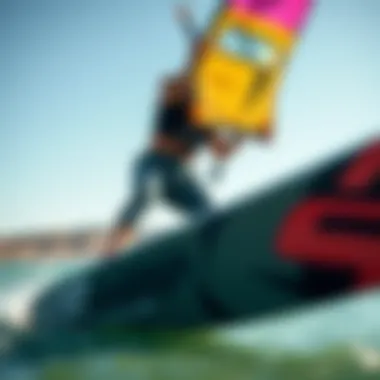
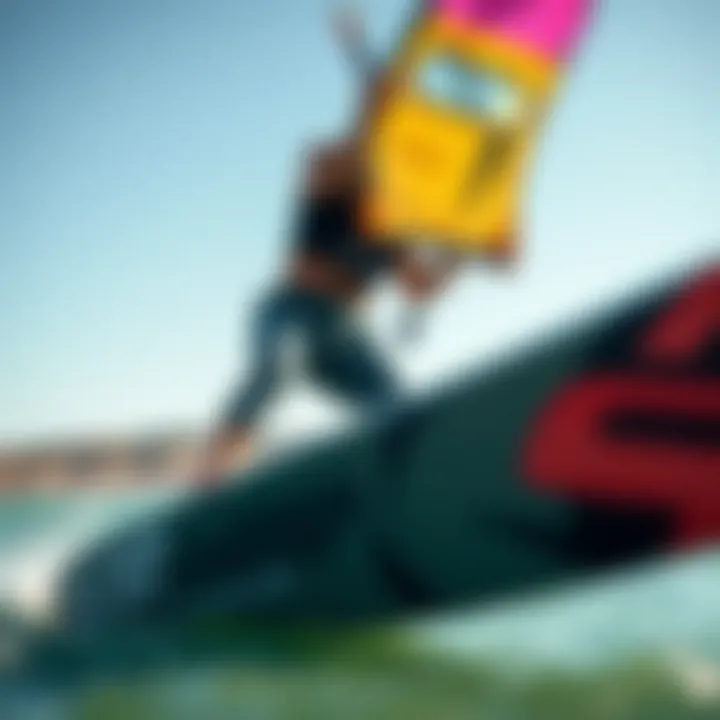
Kite selection is crucial to the overall kiteboarding experience. The size, shape, and style of kites play a significant role in how well they perform under different wind conditions. Here’s a brief look at the main types:
- C-Kites: Known for their high performance primarily in freestyle. They are responsive and offer excellent pop but can be tricky to control in higher winds.
- Bow Kites: These kites are versatile and great for beginners. Their design allows for great depower, meaning riders can control their speed and lift easily.
- Delta Kites: Featuring a triangular shape, these kites provide stability and are good for various conditions. They are especially forgiving in gusty winds.
When it comes to sizes, kites generally range from about 3m to over 16m. Larger kites lift better in lighter winds, whereas smaller kites excel in stronger winds. Understanding where and when to use each size and style can enhance a rider’s performance and safety.
Harnesses and Safety Gear
Harnesses are as crucial as boards and kites in kiteboarding. They connect the rider to the kite and help distribute the pull of the kite across the body, reducing fatigue:
- Chicken Loop: An essential component attached to the harness, it is the point where the kite lines connect. Ensuring that this is in good working order is key for safety.
- Seat Harnesses: These harnesses fit around the waist and legs, offering additional support. They are often favored by beginners as they help with stability.
- Waist Harnesses: Common among intermediate and advanced riders, these provide increased freedom of movement.
Safety gear, including impact vests and helmets, also plays a pivotal role in protecting riders from falls and stubborn waves. Ensuring the right fit and style for your riding technique can be the difference between a minor tumble and a serious injury.
Safety Tip: Always check that your gear is functioning before heading out, especially after long periods of storage.
In short, gear and accessories are not merely optional; they are essential components of kiteboarding that directly influence safety, performance, and enjoyment on the water. Understanding what makes each piece unique will enable kiteboarders to enhance their rides while being conscious of their safety on the waves.
For additional information on kiteboarding gear, you can explore resources like Wikipedia and check discussions on platforms like Reddit.
Whether you are gearing up for recreational fun or pushing the limits of competition, the right equipment will consistently play an integral role in your kiteboarding journey.
Market Trends and Consumer Preferences
In the dynamic world of kiteboarding, keeping a finger on the pulse of market trends and consumer preferences is paramount. This is not just a matter of staying relevant, but it's also about understanding the evolving needs of enthusiasts and professionals alike. As the sport gains traction, recognizing how customer feedback shapes product offerings can help companies refine their strategies and tailor their gear to better meet user demands.
Analyzing Customer Feedback and Reviews
Customer feedback isn't merely a suggestion box; it serves as a valuable compass guiding companies in their development processes. Each review tells a story—a tale of triumph or perhaps a cautionary note on a particular piece of gear. The voices of kiteboarders, both new and seasoned, tend to drive the design and functionality of products. When assessing how feedback impacts the market:
- Quality Control: Companies that listen closely to their customers often find ways to improve quality. Take, for example, a kiteboard brand that received complaints about the durability of straps. After a careful analysis of reviews, the manufacturer altered material selection to enhance resilience, leading to a notable uptick in positive assessments.
- Feature Preferences: Trends fluctuate based on what riders find useful. During a recent survey, many kiteboarders expressed a preference for lighter equipment. Recognizing this, brands began innovating lighter models, helping consumers enjoy longer sessions on the water without fatigue.
- Community Engagement: Brands engaging with their consumers build loyalty. Many companies nowadays are responsive on platforms like reddit.com or facebook.com. When consumers are able to voice their thoughts directly, they feel valued and are more likely to advocate for that brand, fostering a sense of community.
"The best innovations come from listening, not just designing"—A key belief among successful kiteboard companies.
Design Trends: Aesthetics vs. Performance
When it comes to design in kiteboarding, there exists a delicate balance to strike between aesthetics and performance. The core functionality of the equipment must not be overshadowed by flashy designs or trendy colors. It’s a dance between how things look and how well they perform.
- Performance First: Many serious riders prioritize performance. The feel of the board or the responsiveness of the kite can often outweigh the visual appeal. Advanced materials, like carbon fibers, and thoughtfully engineered shapes are dominating sales as performance-driven features shine through. However, companies savvy enough to merge aesthetics without compromising on the ride are the ones reaping the benefits.
- Visual Identity: Just as kiteboarding itself is a form of expression, the competition among brands intensifies through unique visual identities. Riders donning signature styles and colors can serve as a form of personal branding. A kiteboard might catch the eye not just due to its performance specs but because of its vibrant design or the reputation of its rider.
- Current Trends: Some top brands have started to incorporate eco-friendly materials into their aesthetic designs, fulfilling both style and sustainability demands. Riders are increasingly drawn to companies that offer a blend of modern looks alongside a commitment to environmental stewardship.
In summary, the interplay of market trends and consumer preferences is vital for kiteboard companies aiming to lead in innovation and performance. By thoughtfully analyzing customer feedback and navigating the fine line between aesthetics and practicality, these companies can shape the future of kiteboarding gear effectively.
The Role of Sponsorships in the Sport
In the lively world of kiteboarding, sponsorships play a pivotal role, weaving together the threads of commercial interests and personal passions. The act of sponsorship isn't just about slapping a logo on a kiteboard or gear; it extends far beyond that, encompassing a range of benefits that elevate both brands and riders.
Partnerships with Professional Riders
At the heart of kiteboarding sponsorships are the partnerships formed with professional riders. These athletes often embody the spirit of the sport, pushing boundaries while captivating audiences. When a brand chooses to sponsor a rider, they're not merely backing a skilled individual; they're entrusting their image to someone who can authentically represent their values.
This connection opens doors for many companies. Sponsored riders generate content that resonates with followers, showcasing both the sport and the gear. For instance, if a rider performs jaw-dropping tricks while using a particular kite from North Kiteboarding, that sponsorship not only lends credibility to the product but also entices potential customers through real-life demonstrations. It transforms a simple transaction of buying gear into a story where enthusiasts can visualize themselves in similar scenarios.
Moreover, the relationships formed through these partnerships can drive innovation as well. Feedback from sponsored athletes often leads companies to refine their products. An athlete might suggest adjustments in kite design or construction that can lead to enhanced performance in the water. In essence, these collaborations can spur essential advancements in kiteboarding technology.
Brand Impact on Competitions and Events
Sponsorships have a significant bearing on competitions and events within the kiteboarding arena. From local contests to international championships, sponsorships can help fuel these events, ensuring they have the budget to run smoothly and attract top talent. Companies like Duotone and Cabrinha frequently sponsor competitions, providing prizes, gear, or even hosting entire events.
"Sponsorship not only uplifts the sport but also cements a brand's presence in the kiteboarding community."
Tournaments with reputable sponsors often draw larger crowds, as the presence of top-tier brands adds an allure to the events. Spectators want to witness the best riders in action, but they also want to see the latest gear in play. When a brand is visible at these prestigious events, it establishes exclusivity and prestige.
Additionally, sponsoring these competitions provides brands valuable insights into consumer behavior. They can analyze trends, gauge audience preferences, and leverage that information for future marketing campaigns. The feedback loop created between competition sponsorship and direct engagement with the kiteboarding community becomes a tremendous asset for brand development and product design.
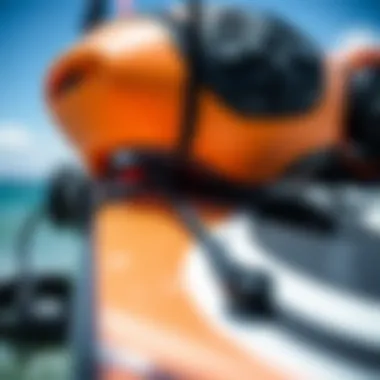
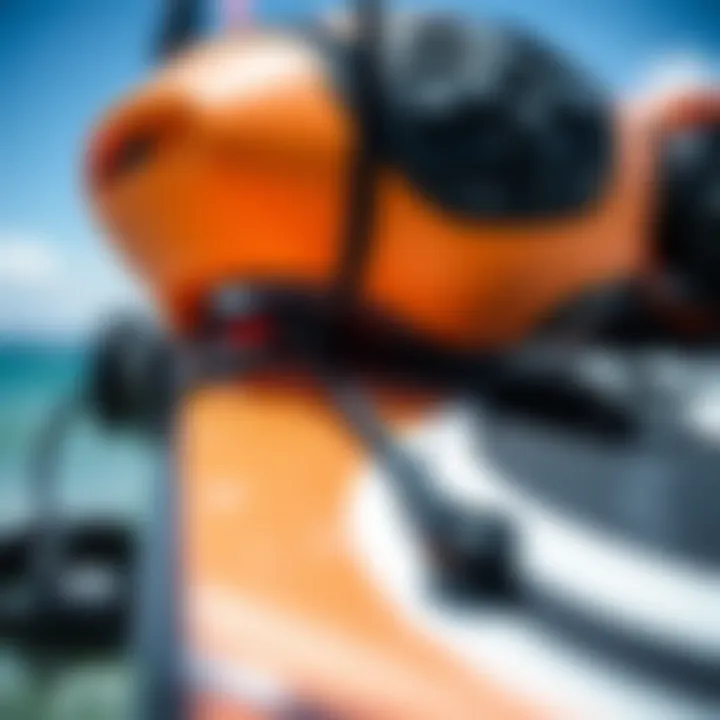
In summation, sponsorships in kiteboarding are much more than financial backing; they're strategic alliances that fuel innovation, engage audiences, and ultimately enrich the culture of the sport. By fostering relationships with riders and investing in events, companies not only strengthen their brand but also contribute to the ongoing growth and vitality of kiteboarding.
Environmental Responsibility in Kiteboarding
The kiteboarding industry, much like other adventure sports, finds itself dancing on the cusp of excitement and environmental preservation. The allure of the wind in your hair, sun on your face, and the sheer thrill of riding the waves comes with the pressing responsibility of caring for the natural resources we cherish. With oceans and beaches becoming increasingly fragile due to pollution and climate change, the importance of environmental responsibility in kiteboarding cannot be overstated. Companies that recognize this imperative position themselves not just as market leaders, but as custodians of the environment.
Sustainable Practices Among Manufacturers
Many manufacturers are realizing the value of integrating sustainable practices into their operations. This shift is not merely a trend but a necessity in today’s world. Kiteboard companies that focus on eco-friendly materials and methods are paving the way for a greener future. Here are a few examples of sustainable practices:
- Eco-Friendly Materials: Instead of relying heavily on traditional plastics and synthetic materials, some companies are turning to recycled or organic alternatives. Brands using bio-resins for their kiteboards and harnesses can significantly reduce their carbon footprint.
- Manufacturing Processes: Sustainable production methods are taking root. For instance, some companies are adopting closed-loop systems that minimize waste during manufacturing, ensuring that even scrap materials are repurposed.
- Transport Options: Some manufacturers employ more environmentally friendly shipping methods. By optimizing logistics and using less polluting transport options, they reduce their overall impact on the environment.
Initiatives for Ocean and Beach Conservation
Beyond manufacturing, it's critical for kiteboarding companies to engage in broader initiatives aimed at ocean and beach conservation. These activities not only help protect the environments where kiteboarding takes place but also foster a sense of community among enthusiasts. Here are some initiatives seen across the industry:
- Beach Clean-Up Drives: Engaging in local beach clean-up campaigns is one way brands give back to the environments that support their sport. Organizing events encourages the community to participate, highlighting the importance of maintaining clean natural spaces.
- Funding Conservation Projects: Some companies contribute a percentage of their profits to organizations dedicated to ocean preservation. These funds help combat issues like plastic pollution and coral reef restoration.
- Educating Consumers: Raising awareness about environmental issues affecting waterways and beaches is crucial. Companies often host workshops or create social media content to educate their customers on responsible kiteboarding practices and the importance of environmental stewardship.
"The ocean is more than a playground; it's a vital ecosystem that must be preserved for future generations."
Future Outlook for Kiteboard Companies
The future of kiteboarding companies stands at an interesting crossroads, shaped by evolving technology, changing consumer preferences, and environmental considerations. Understanding this outlook is crucial, not just for manufacturers but also for participants in the kiteboarding community. Companies need to be nimble, ready to adapt to new trends while simultaneously innovating at a rate that keeps their products relevant and desirable.
By examining what lies ahead, we can discern the major trends that might influence the industry for years to come. These insights will serve riders, instructors, and event organizers by highlighting potential gear advancements and shifts in market demand that directly affect their activities and experiences in kiteboarding.
In essence, this future outlook encapsulates a roadmap for both growth and sustainability within kiteboarding, emphasizing the interplay between performance and responsible practices.
Upcoming Innovations on the Horizon
New advancements in kiteboarding equipment are prompted by technological breakthroughs. The innovation spectrum stretches across various elements of kiteboards, kites, harnesses, and accessories, with each segment witnessing remarkable progress.
- Smart Kites: Imagine a kite that can sense wind conditions and adjust its shape for optimal performance. Companies like North Kiteboarding are already experimenting with sensor technologies that could usher in a new era of smart kites.
- Eco-Friendly Materials: The drive towards sustainability means more companies are turning to recycled and biodegradable materials. For example, organizations such as Cabrinha are working on creating boards with lower environmental impacts by utilizing reclaimed materials—and we are likely to see this trend expand.
- Performance Enhancements: Improvements in aerodynamics and weight reduction are ongoing. Innovation in the use of lighter constructions, such as carbon fiber, allows boards to slice cleanly through the water while being robust enough to handle rugged conditions.
"Kiteboarding is not just a sport; it's about riding the wind while being mindful of our planet. The future truly looks promising for those who care about both performance and the environment."
These innovations promise to enhance user experience, whether you're a novice or a seasoned rider. As technology progresses, so too will the expectations of kiteboarders, leading companies to stay a step ahead.
Challenges in the Industry
The kiteboarding landscape is not without its hurdles, and kiteboard companies must navigate a series of challenges to maintain relevance and growth in an increasingly competitive market.
- Market Saturation: As the popularity of kiteboarding rises, competitors flood the market with similar offerings. Standing out requires companies to focus sharply on innovation and brand identity.
- Regulatory Issues: With the growth of the sport, local governments may impose regulations affecting where kiteboarding can occur. Companies must stay informed and adapt their strategies accordingly to avoid disruption in their operations.
- Environmental Concerns: Ironically, as companies push for greener practices, they must balance profit margins. Making sustainable equipment often entails higher manufacturing costs, which can translate to pricier gear for consumers.
- Supply Chain Dependencies: The ongoing reverberations from global events, such as the pandemic, have illuminated vulnerabilities in supply chains. Manufacturers need to reassess these networks to ensure timely availability of materials and components.
In closing, the prospect for kiteboard companies combines excitement with uncertainty. While there are various paths forward, the most forward-thinking brands will marry cutting-edge innovation with sustainable practices. As the industry faces challenges head-on, it poses an opportunity for growth and transformation—an evolution that will shape the future of kiteboarding itself.
The End: The Integral Role of Kiteboard Companies in the Sport
Kiteboard companies play a crucial role in the ever-evolving landscape of kiteboarding. They are not just manufacturers; they are innovators, community builders, and sustainability advocates. Their influence extends beyond mere equipment production to encompass rider experiences, environmental stewardship, and the overall growth of the sport.
The importance of kiteboard companies can be viewed through several lenses:
- Innovation and Technology: Today's kiteboard companies constantly push the envelope in terms of technology. They develop cutting-edge materials, designs, and safety mechanisms that enhance performance while minimizing risk. This ongoing commitment to innovation guarantees that riders have access to the latest advancements, improving their overall enjoyment and safety on the water.
- Market Influence: The strategies companies employ to reach customers shape the kiteboarding market. Established brands like North Kiteboarding and Cabrinha have built strong followings by aligning their products with the aspirations of kiteboarders. This creates a vibrant market where the needs of hobbyists and professionals alike are catered to, allowing for a diverse range of products and ensuring that every rider finds what fits.
- Community Development: These companies foster a sense of community through sponsorships, events, and educational programs. Events like the GKA Kite World Tour are often sponsored by major players in the industry, drawing attention to the sport and providing aspiring athletes with platforms to showcase their skills. This support nurtures connections within the community, making kiteboarding more inclusive.
- Sustainable Practices: In an age of heightened environmental consciousness, many kiteboard companies are committing to sustainability. Their initiatives include using recyclable materials, creating environmentally friendly production processes, and participating in beach cleanup efforts. This thread of responsibility not only helps the planet but also attracts environmentally conscious consumers who want to align themselves with brands that share their values.
"The ongoing evolution of the kiteboarding industry is fueled by companies that embrace both innovation and responsibility. Their role transcends mere production to embrace community and environment."
In essence, kiteboard companies are the lifeblood of the kiteboarding sport, shaping its future through technological advancements and community engagement while taking great responsibility for their environmental footprint. As the industry progresses, it is imperative that these companies continue to embrace innovation, promote responsible practices, and foster an inclusive community for all riders.
Reflecting on Industry Growth and Evolution
The kiteboarding industry has witnessed remarkable growth over the past two decades, marked by advancements in both technology and community engagement. Early on, kiteboarding was often viewed as a niche activity, with limited accessibility to high-quality gear. As the sport gained traction, leading companies embarked on a journey to refine designs, enhancing performance and user experience. This evolution has led to the availability of specialized equipment that caters to a broader range of skill levels, making it easier for newcomers to join the sport.
Moreover, the industry's growth has been characterized by major events and competitions that have pushed the boundaries of what is possible in kiteboarding. These events serve not just as competitive platforms but also as showcases for the latest innovations in gear, inspiring manufacturers to continuously improve their offerings. Additionally, the rise of social media has played a significant part in promoting kiteboarding lore, attracting enthusiasts eager to engage with the sport.
Encouraging Responsible Participation in Kiteboarding
While kiteboarding is exhilarating, the environment and proper etiquette must be respected. Kiteboard companies have a vital role in promoting responsible participation among riders. They emphasize the importance of safety gear and proper understanding of wind conditions to ensure riders operate within safe parameters. Furthermore, many companies engage in educational campaigns that underscore the necessity of preserving natural environments, such as coastal areas and marine ecosystems, vital for the sustainability of the sport.
Responsible participation extends to understanding the dynamics of local kiteboarding communities. Companies are actively promoting responsible riding ethics to prevent overcrowding in popular spots and advocating for user-friendly areas that allow for everyone to enjoy the sport. By fostering these principles, kiteboard companies not only ensure the sport's continued growth but also its preservation for future generations.







